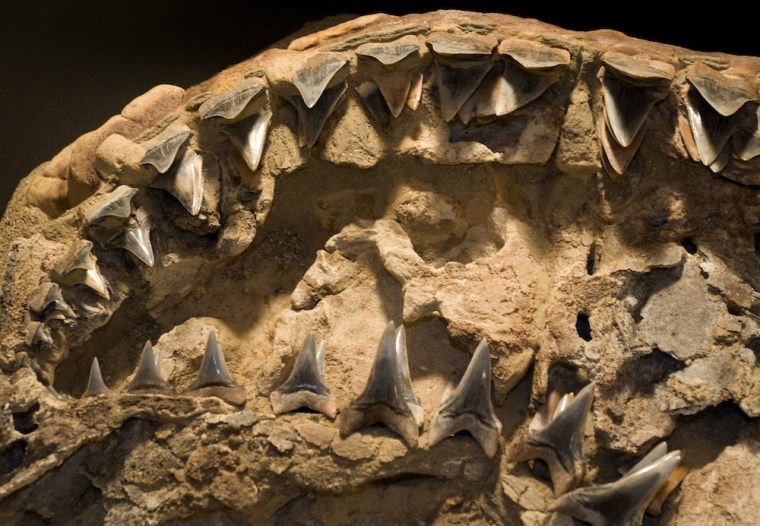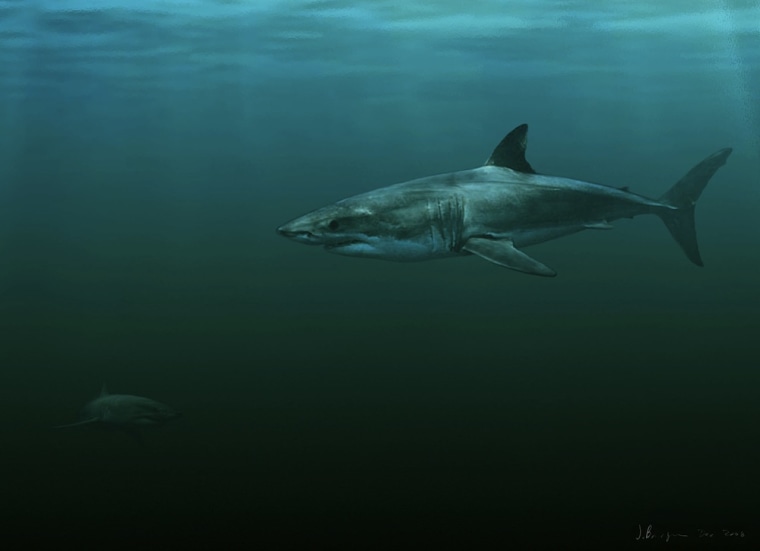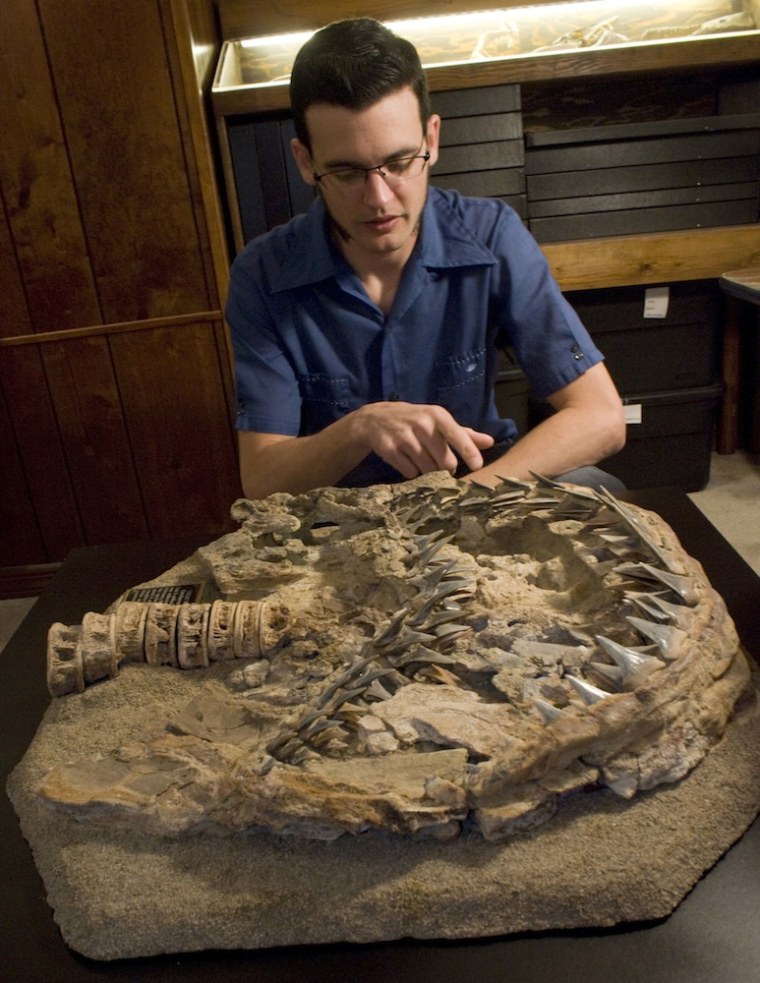
This well-preserved fossil is the only intact partial skull ever found of a white shark that lived about 4.5 million years ago named Carcharodon hubbelli.Paul Ramey / Florida Museum of Natural History photo by Jeff Gage
Great white sharks (Carcharodon carcharias) are the biggest meat-eating shark in the world, with some reaching more than 20 feet (6 meters) long and weighing more than 5,000 pounds (2,250 kilograms). They hunt in more of the world’s seas than any other sharks, ranging across the Atlantic, Pacific and Indian oceans, from the cold waters near the Antarctic to the tropical waters near the equator, cruising up to 43 miles per hour (70 kilometers per hour) in pursuit of prey.

Their numbers are rapidly declining worldwide, however, mostly because of accidental entanglement in fishing nets.
The evolutionary history of the great white has been contested by paleontologists for 150 years. They were originally classified as direct relatives of megatooth sharks such as the extinct Carcharocles megalodon, the largest carnivorous shark that ever lived.

This specimen was once about 16 feet (4.8 m) long. The species was named after Gordon Hubbell of Gainesville, Fla., a collector who recovered the fossils from a farmer who discovered them in the Pisco Formation of southern Peru in 1988. Hubbell donated the fossils to the Florida Museum of Natural History in 2009.

“Naming the shark in his honor is a small tip of the hat to all the great things he has done to advance paleontology,” Ehret said.
Based on Hubbell’s hand-drawn maps and descriptions of the landscape, the researchers ventured to the site where the shark fossils had been discovered. Their quest earned them one close call.
“We decided to leave the field a day early, and as it turned out, we left the area just a few hours before the magnitude-7.9 quake that hit Pisco in Peru in 2007,” Ehret recalled.

“That 2 million-year pushback is pretty significant because in the evolutionary history of white sharks, that puts this species in a more appropriate time category to be ancestral or kind of an intermediate form of white shark,” Ehret said.

“Some people might jump to the conclusion that this is a smoking gun, that the debate is over,” Ehret said. “I don’t think the debate will be over. It’s difficult to work with fossil sharks, since we typically only find isolated teeth and different paleontologists will interpret the fossils in different ways. I completely understand that — I value the opinions and conclusions that other paleontologists draw.

“While I personally think we make a very strong case that white sharks evolved from mako shark ancestors, I know some people out there will continue to investigate the relationships between the giant shark Megaladon and modern white sharks,” Ehret said. “That’s how science has to work: You have to put out hypotheses and also test them, see if they stand up to scientific research.”